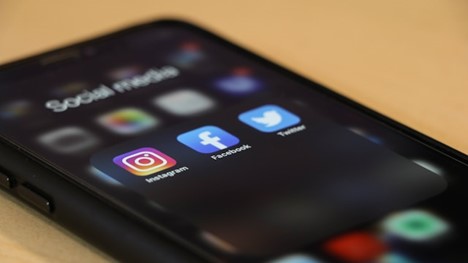Social media has become a vital tool for professional sports teams to engage fans, promote events, and build a strong community. With billions of users on social platforms, sports teams can reach a vast audience, fostering a deeper connection with their fan base and enhancing their brand visibility. Mike Golub explores how professional sports teams leverage social media platforms, discusses best practices, and highlights successful campaigns that have set the standard in the industry.
Leveraging Social Media Platforms
Facebook remains a cornerstone of social media strategy for sports teams due to its massive user base and versatile content-sharing capabilities. many teams use Facebook to share a variety of content, including live game updates, player interviews, behind-the-scenes footage, and fan polls. The platform’s event feature is particularly useful for promoting upcoming games and fan meet-ups.
The NBA’s Golden State Warriors use Facebook Live to stream pre-game warm-ups and post-game press conferences, providing fans with exclusive content that keeps them engaged and connected.
X, Formerly Twitter
X is ideal for real-time updates and interactions, making it perfect for live-tweeting games and engaging in conversations with fans. Teams can use hashtags to create trending topics, facilitating broader discussions and increasing visibility.
During the FIFA World Cup, teams like the U.S. Men’s National Soccer Team effectively used X to provide minute-by-minute updates, highlight key moments, and interact with fans through Q&A sessions and polls.
Instagram’s visual-centric platform is perfect for sharing high-quality images and videos, capturing the excitement of games, training sessions, and fan interactions. Stories and IGTV offer additional avenues for teams to share ephemeral and longer-form content, respectively.
Manchester United’s Instagram account showcases stunning matchday photos, player highlights, and fan-generated content, creating a visually appealing narrative that attracts millions of followers.
TikTok
TikTok’s short-form video format allows sports teams to reach a younger, highly engaged audience. Teams create viral challenges, behind-the-scenes clips, and player-centric content that resonates with fans and drives engagement.
The NFL’s Kansas City Chiefs have leveraged TikTok to share fun and relatable content, including player dance-offs and fan challenges, which helps humanize the team and foster a sense of community.
Best Practices for Social Media Engagement
Consistent Posting
Regularly updating social media channels with fresh content is crucial for maintaining fan interest. Teams should develop a content calendar to ensure a steady stream of posts, including game updates, player news, and community events.
Authentic Interaction
Be sure to engage authentically with fans by responding to comments, answering questions, and acknowledging fan contributions to build a loyal and invested community. Personal interactions can make fans feel valued and more connected to the team.
High-Quality Content
Investing in high-quality visuals and videos enhances the overall appeal of social media posts. Professional photos, well-edited videos, and polished graphics attract more attention and encourage shares and likes.
Fan-Centric Campaigns
Creating campaigns that involve fan participation, such as photo contests, hashtag challenges, and fan polls, increases engagement and fosters a sense of community. Highlighting fan contributions on official channels can also boost loyalty.
Cross-Platform Promotion
Promoting content across multiple platforms ensures maximum reach and engagement. Teams should tailor their content to fit the unique features and audience preferences of each platform while maintaining a consistent brand voice.

Successful Social Media Campaigns
#FlyEaglesFly – Philadelphia Eagles
The Philadelphia Eagles’ #FlyEaglesFly campaign leveraged a simple, memorable hashtag that fans could rally around. During their Super Bowl-winning season, the team used this hashtag across all social media platforms, encouraging fans to share their own content and experiences. The campaign created a unified digital community, boosting engagement and fan pride.
#ALLinCLE – Cleveland Cavaliers
The Cleveland Cavaliers’ #ALLinCLE campaign during their championship run in 2016 galvanized the entire city of Cleveland. The team shared behind-the-scenes content, fan stories, and player highlights using the hashtag, creating a sense of collective excitement and support. The campaign’s success was evident in the overwhelming fan engagement and increased social media following.
This Is Our House – Toronto Raptors
The Toronto Raptors’ “This Is Our House” campaign emphasized the team’s connection to their home city and fans. By sharing content that highlighted the team’s journey and fan support, the Raptors built a strong, emotionally resonant narrative. The campaign culminated in their 2019 NBA Championship win, with social media playing a key role in amplifying fan celebrations and team pride.
Conclusion
Social media strategies are essential for professional sports teams to engage with fans, promote events, and build a cohesive community. By leveraging platforms like Facebook, Twitter, Instagram, and TikTok, teams can share diverse content that resonates directly with their audience. Best practices such as consistent posting, authentic interaction, high-quality content, fan-centric campaigns, and cross-platform promotion are key to maximizing social media impact. Successful campaigns like #FlyEaglesFly, #ALLinCLE, and “This Is Our House” demonstrate the hidden power of social media in fostering fan loyalty and creating memorable experiences. Through effective social media strategies, sports teams can strengthen their connection with fans and enhance their brand presence in the digital age.
